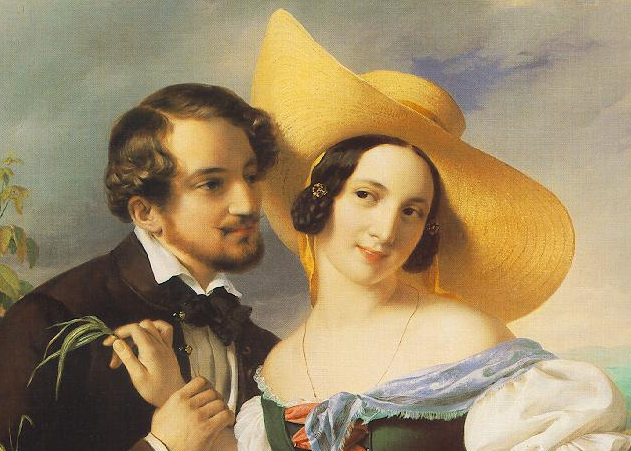FWP:
SETS
== A,B; GENERATORS; LIST
BEKHUDI: {21,6}
'LIST' verses: The first line is an excellent example of a 'list'; it's entirely verb-free, and thus quite uninterpretable. For other
examples of such deceptively simple-looking, extremely versatile
'list' constructions, see: {2,1}*; {2,2x}; {13,3}; {24,10x}; {33,7}; {49,5}, line 2; {51,8x}***, spectacular; {53,5}; {61,9x}; {68,6x}, line 2; {71,3}; {77,3}; {78,3}; {97,10}**; {115,2}, a list of negated items;
{128,3x}; {137,4x}; {169,5}; {194,7x}; {206,4}; {228,10}; {230,5}; {230,7} // {280x,4}*; {294x,3}; {314x,5}; {314x,6}, a list of negated items; {320x,2}; {326x,4}; {349x,8}, negated items; {360x,6} (echoed in {361x,1} and {361x,7}), '1 x and 100 y'; {385x,4}; {424x,5}; {424x,6}; {424x,8}; {434x,5}.
Some 'list' lines are radically and designedly ambiguous; others,
however, are easier to decode; see for example the relatively unproblematical {120,12} (shaped by a ko ) and {123,5}. See also the special list-like group of 'I and' verses: {5,6}.
TESTING verses == {4,4}; {4,9x};
{4,16x}; {21,4};
{22,7}; {22,8}; {25,4}; {26,3}; {43,2}; {48,5}; {51,9x}, negatives; {60,7}; {91,1}; {104,2}; {115,6}; {126,9}; {129,6x}; {175,1}; {204}, all verses; {234,5} // {348x,7}, testing the beloved; {424x,8}
By giving us in the first line four abstract qualities, devoid of verbs, connected as simply as possible (A and B, C and D), Ghalib invites-- and by this undecidability also enforces-- a multitude of readings. For after all, the 'and' can be a sign of genuine linking (A and B have common qualities); or of opposition and contrast (A-- and on the other hand, B); or of some kind of surprise or paradox (A-- and B!).
Moreover, since none of the four qualities are specifically assigned to either the beloved or the lover, the possible mathematical permutations become remarkable, and make this one of the richest 'meaning-generators' in the whole divan. (The first line also provides a nice internal rhyme.)
I've rendered be-xvudii as 'self-lessness', as a reminder that it's not the same as the usual (English) 'selflessness' in the sense of 'unselfishness', but is to be taken quite literally as a state of being lost to the world, being 'outside' oneself. For more on this see {21,6}.
For the present verse, some of the possible readings of the first line have been spelled out below; there could perhaps be even more:
=Artlessness and cleverness, self-lessness and awareness! (These qualities are all present at once, in the lover and/or the beloved.)
=[Her] artlessness and cleverness, [her] self-lessness and awareness! (She feigns naivete and obliviousness, but it's actually all a deliberate ruse.)
=[My] artlessness and [her] cleverness, [my] self-lessness and [her] awareness! (I am a simple-hearted, devoted lover, and she is testing my courage.)
=[her] artlessness and [my] cleverness, [her] self-lessness and [my] awareness! (She naively thinks her show of simplicity and obliviousness, assumed as a test, has fooled me, but I cleverly see through her.)
=[Her] artlessness and cleverness, [my] self-lessness and awareness! (She and I are both paradoxical creatures; we both combine in ourselves seemingly contradictory qualities.)
='Artlessness'-- and cleverness! 'Self-lessness'-- and awareness! (Her 'artlessness' is just a show, a mask for her cleverness; similarly, my 'self-lessness' is just a cover for my awareness.)
Aren't those particular four words excellently selected and placed, so as to generate multivalent, and ambivalent, meanings? For instances in which beloveds are saadah purkaar , see {108,8}, and {294x,3}.
Note for meter fans: The word jur))at is pronounced, and scanned, as jur-))at, long-long (since the alif is really only a chair for the hamzah , which counts as a consonant. So remember, even if nowadays it sometimes gets only a tiny hamzah and thus looks like juraat (ju-raa-t, short-long-short), it's not. There ought in principle to be a hamzah there. More examples: {35,6}, {188,2}.
Another note for meter fans: The first line sounds much too 'thumping' and repetitive when recited. I think it's because of the way the word divisions follow and emphasize the foot divisions.
Compare Mir's equally clever juxtaposing of
attributes in M{96,7}.

Nazm:
That is, the beautiful one's ignoring the lover, and showing ignorance of his situation, is only in order to see the lover's heart and to test his courage. In reality, it's cleverness and awareness, and outwardly it's artlessness and ignorance.
== Nazm page 4